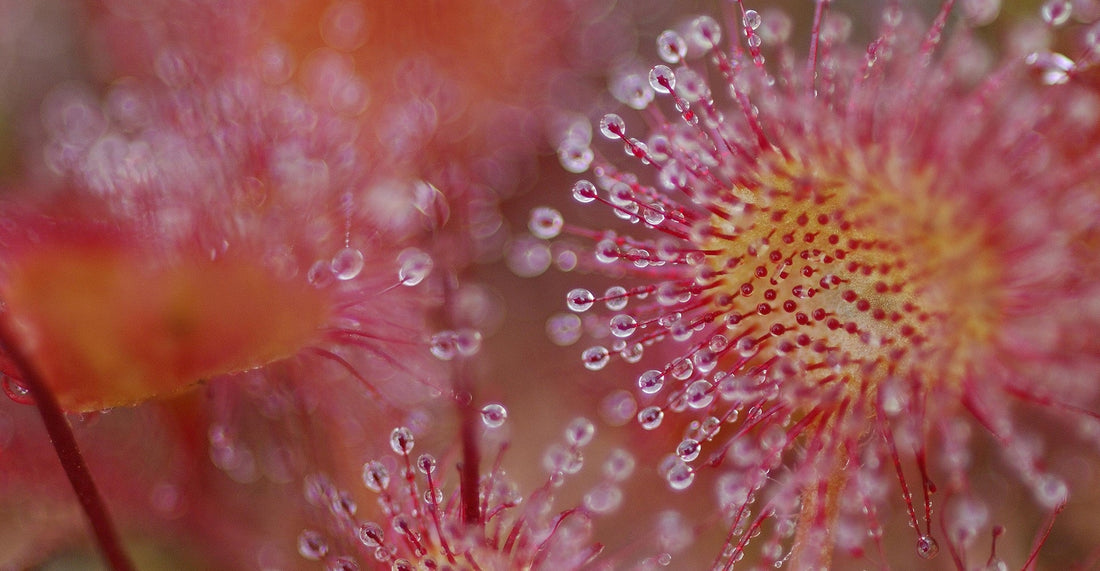Carnivorous plants are a fascinating group of plants that have evolved to capture and digest insects and other small animals as a means of obtaining nutrients. These plants are found in a variety of habitats, including bogs, swamps, and other areas with nutrient-poor soils. In this article, we will explore the various types of carnivorous plants, how they capture and digest their prey, and their ecological importance.
There are over 600 species of carnivorous plants, and they belong to several different plant families. The most well-known carnivorous plants are the Venus flytrap (Dionaea muscipula), the pitcher plant (Sarracenia spp.), and the sundew (Drosera spp.).
Venus flytraps are native to the wetlands of the Carolinas in the United States. They have modified leaves that form a trap, which is triggered when an insect brushes against one of the trigger hairs on the surface of the leaf. The trap snaps shut, capturing the insect inside. The leaf then secretes enzymes that digest the insect, and the plant absorbs the nutrients. Venus flytraps are relatively small plants, with traps that are typically about 1-2 inches in diameter.
Pitcher plants are native to North America, South America, and Southeast Asia. They have modified leaves that form a pitcher-shaped trap, which is filled with a liquid that contains digestive enzymes. Insects are attracted to the bright colors and sweet smell of the pitcher, and they often fall into the trap and drown. The enzymes in the liquid then digest the insects, and the plant absorbs the nutrients. Pitcher plants come in a variety of sizes and shapes, with some species having pitchers that are several inches tall and others having pitchers that are just a few inches long.
Sundews are native to many parts of the world, including North America, South America, Europe, Asia, and Australia. They have small, sticky tentacles on their leaves that secrete a sticky, sweet-smelling substance called mucilage. Insects are attracted to the mucilage and become stuck when they land on the leaf. The sundew then curls its tentacles around the insect and secretes enzymes that digest the insect. Sundews are small plants, with leaves that are typically less than an inch long.
In addition to Venus flytraps, pitcher plants, and sundews, there are several other types of carnivorous plants. These include the bladderwort (Utricularia spp.), the butterwort (Pinguicula spp.), and the cobra plant (Darlingtonia californica).
Bladderworts are native to many parts of the world, including North America, South America, Europe, and Australia. They are aquatic plants that have small, bladder-like traps on their roots or leaves. These traps are triggered by the movement of small aquatic animals, such as water fleas or protozoa. The traps snap shut, capturing the animal inside, and the plant secretes enzymes that digest the animal. Bladderworts are small plants, with leaves that are typically less than an inch long.
Butterworts are native to North America, South America, Europe, and Asia. They have small, sticky leaves that secrete a sticky, sweet-smelling substance called mucilage. Insects are attracted to the mucilage and become stuck when they land on the leaf. The butterwort then secretes enzymes that digest the insect. Butterworts are small plants, with leaves that are typically less than an inch long.
Cobra plants are native to the mountains of California and Oregon in the United States. They have modified leaves that form a tube-like trap, which is filled with a liquid that contains digestive enzymes. Insects are attracted to the bright colors and sweet smell of the cobra plant and often fall into the trap and drown. The enzymes in the liquid then digest the insects, and the plant absorbs the nutrients. Cobra plants are small plants, with traps that are typically less than an inch long.
Carnivorous plants have evolved to capture and digest insects and other small animals as a means of obtaining nutrients that are otherwise scarce in their habitats. These plants are found in a variety of habitats, including bogs, swamps, and other areas with nutrient-poor soils. Carnivorous plants are an important part of these ecosystems, as they help to control the populations of insects and other small animals.
Carnivorous plants have several adaptations that help them capture and digest their prey. These include modified leaves that form traps, sticky tentacles or mucilage that ensnare insects, and digestive enzymes that break down the insects and absorb the nutrients.
In addition to their ecological importance, carnivorous plants are also popular among plant collectors and gardeners. Many species of carnivorous plants are easy to grow and can be kept in containers, making them suitable for cultivation in a home garden or greenhouse.
Despite their interesting adaptations and popularity, carnivorous plants are threatened by habitat destruction and other human activities. Many species of carnivorous plants are endangered or threatened, and conservation efforts are needed to protect these plants and their habitats.
In conclusion, carnivorous plants are a diverse and fascinating group of plants that have evolved to capture and digest insects and other small animals as a means of obtaining nutrients. These plants are found in a variety of habitats and play an important role in their ecosystems. Carnivorous plants have several adaptations that help them capture and digest their prey, and they are popular among plant collectors and gardeners. However, many species of carnivorous plants are threatened by habitat destruction and other human activities, and conservation efforts are needed to protect these plants and their habitats.
